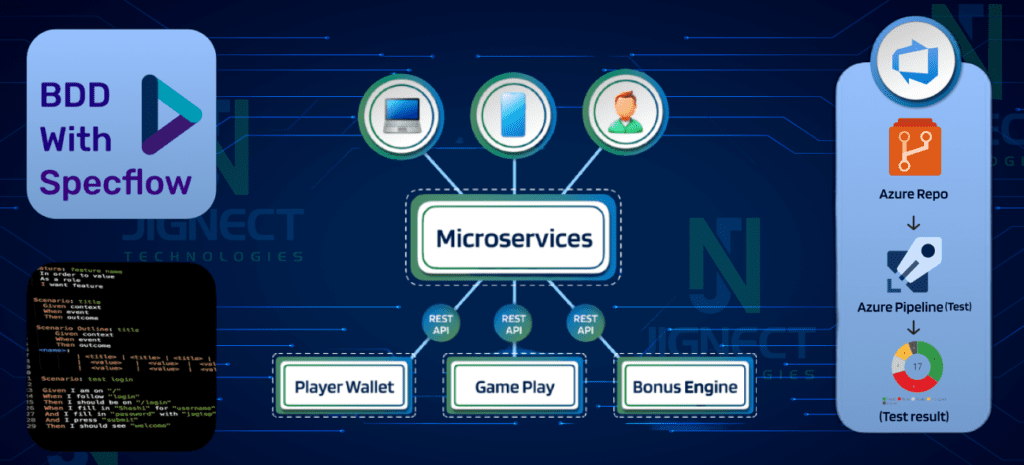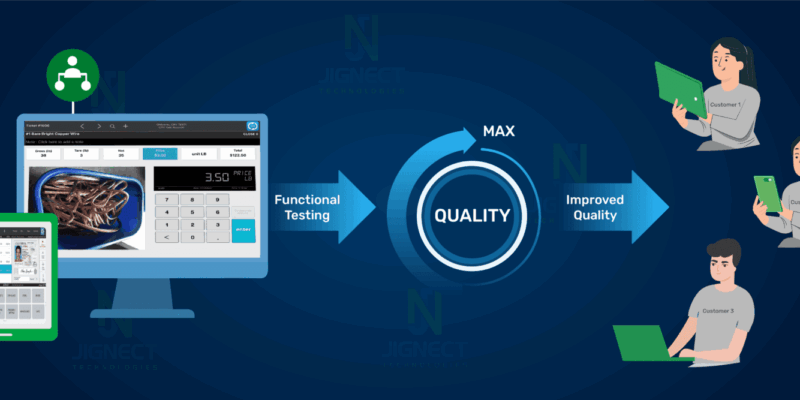API Test Automation For Gaming Application Built On Microservices Architecture
Customer :
- Customer is a well-known gaming application development company that creates popular online casino games.
- The application consists of several microservices, each responsible for a specific function such as user authentication, game progress, and in-game purchases.
- The company has a large user base and its games are played across multiple platforms, including web browsers, mobile devices, and gaming consoles. However, the company faced challenges in ensuring the quality of its gaming application APIs. To address this issue, the customer decided to adopt an automated API testing solution for all microservices.
Challenges :
- Manual testing of APIs on the gaming application was a cumbersome and error-prone process that involved multiple teams, including developers, testers, and operations. This resulted in delays and inconsistencies.
- The complex nature of the gaming application and its microservice APIs made it difficult to test all possible scenarios repeatedly and manually, leading to an increased likelihood of errors.
- The process of manual testing requires more time and results in a longer release time.
- The main challenge in automating the testing of microservices APIs is the complexity of the application.
- The application consists of multiple microservices, each with its own API, and all of these APIs need to be tested individually and as part of the larger application.
- Additionally, the APIs are constantly changing as new features are added or existing features are modified. This makes it difficult to maintain the test scripts and keep them up to date.
Solution :

To overcome all challenges, JigNect’s team used the following approach :
Test Automation Framework:
- We used the SpecFlow test automation framework that is specifically designed for testing microservices APIs. The framework allows us to create test scripts for each API and run them as part of the larger application. It also provides features for data-driven testing, parallel testing, and reporting.
Continuous Integration and Deployment (CI/CD):
- We integrated the test automation framework with the CI/CD pipeline in Azure DevOps to ensure that the tests are run automatically every time a new code is committed to the repository. This helps us catch any issues early in the development process.
Gherkin scenarios:
- Using Gherkin-syntax, we scripted scenarios for our tests, making it easier for non-technical individuals to comprehend and follow along.
- The high-level features included in the solution were the support for Behavior Driven Development (BDD), built-in logs support, parallel test runs support, configuration support to run on any environment/platform, and common functions to write automated scripts at a faster pace.
Tools & Technologies :
- Continuous Integration: Azure DevOps
- API Testing: HTTP C# Client
- BDD: Specflow with C#
- Defect Tracking: Jira
- Code Repository: GIT
Result :
By using the above approach, we were able to achieve the following results:
Reduce Testing Cycle Time:
- Automation testing of microservices APIs helped us reduce testing time significantly. We were able to run tests in parallel, reducing the overall testing time.
Improved Quality:
- Automation testing of microservices APIs helped us improve the quality of the application by identifying issues early in the development process.
Fast & Easy Test Scenarios Creation:
- The testing solutions allowed the team to quickly and easily add new testing scenarios for new features to the test suite.
Improved Test Coverage:
- Automation testing of microservices APIs helped us improve test coverage by ensuring that all APIs are tested individually and as part of the larger application.
Faster Feedback:
- Faster Feedback: Automation testing of microservices APIs helped us provide faster feedback to the development team. Any issues were identified early in the development process, reducing the time and effort required to fix them.
Conclusion :
- The implementation of an automated API testing solution for API microservices architecture helped the client to overcome the challenges associated with manual testing for gaming application APIs.
- The solution enabled the team to automate the testing process and ensure that APIs were tested thoroughly before deployment.
- Overall, the solution helped the client to improve the quality of their gaming application APIs, increase efficiency, and deliver a better experience to their users.
Witness how our meticulous approach and cutting-edge solutions elevated quality and performance to new heights. Begin your journey into the world of software testing excellence. To know more refer to Tools & Technologies & QA Services.
If you would like to learn more about the awesome services we provide, be sure to reach out.
Happy Testing 🙂



